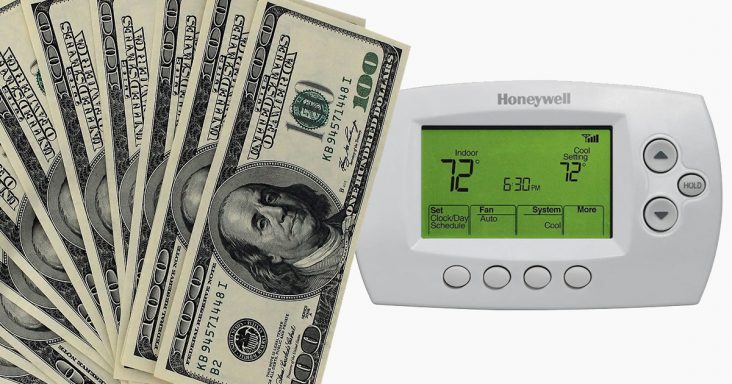Heating expenses to rise amid colder winter, COVID-19 mitigation efforts
by October 6, 2020 3:24 pm 1,198 views

Heating bills are expected to rise this winter as more energy is consumed because of colder temperatures and efforts to mitigate the spread of COVID-19, according to the U.S. Energy Information Administration (EIA).
The EIA released Tuesday (Oct. 6) the Short-Term Energy and Winter Fuels Outlook that shows expenditures for natural gas, electricity and propane will rise 6%, 7% and 14%, respectively, this winter from last winter. A 2% decline in natural gas prices is expected to be offset by an 8% increase in consumption this winter, resulting in the 6% rise for households that use natural gas to heat their homes, said EIA Administrator Linda Capuano.
More space heating will be required this winter, based on forecasts from the National Oceanic and Atmospheric Administration (NOAA), and indicate colder winter temperatures. U.S. average heating degree days are projected to rise by 5% this winter.
Home heating use is expected to rise this winter with more people working and attending school from home to mitigate the spread of COVID.
One exception to the projected rise in heating expenses is for households using heating oil.
“We expect households that use heating oil as their primary space heating fuel will spend 10% less this winter than last winter, as lower crude oil prices and abundant fuel supplies drive retail heating oil prices down and offset forecast colder winter temperatures,” Capuano said.
International benchmark Brent crude oil spot prices fell $4 per barrel to $41 per barrel in September, from August. High inventory levels and surplus crude oil production capacity are expected to limit price increases. The spot prices are projected to be an average of $42 per barrel in the fourth quarter and rise to an average of $47 per barrel in 2021.
Global consumption of petroleum and liquid fuels is expected to fall by 8.6 million barrels per day to 92.8 million barrels per day in 2020, from 2019, before rising by 6.3 million barrels per day in 2021.
U.S. crude oil production is expected to fall to an average of 11 million barrels per day in the second quarter of 2021 before rising to 11.2 million barrels per day in the fourth quarter of 2021. Production rose to 11.2 million barrels per day in September after tight oil operators restarted wells as prices increased. The rise in production is not expected to offset the declines from existing wells, and production is expected to decline.
Working natural gas storage inventories have risen to a record high and are projected to reach more than 4 trillion cubic feet by the end of October.
Colder temperatures are expected to lead to more withdrawals and inventories are projected to be 6% lower than the five-year (2015-2019) average by the end of March.
Increased winter demand and reduced production of natural gas, along with higher U.S. liquefied natural gas (LNG) exports, are expected to contribute to a rise in the Henry Hub Natural gas spot prices. In January, the prices are projected to rise to $3.38 per million British thermal units. The prices will remain higher than $3 per million British thermal units throughout 2021, averaging $3.13 per million British thermal units for the year. The 2020 average is projected to be $2.07 million British thermal units.
Rising natural gas prices are expected to contribute to a rise in coal production. The production is expected to rise by 19% in 2021 as rising natural gas prices increase demand for coal used by the U.S. electric power sector to generate electricity. Coal production is expected to fall 26% in 2020, from 2019, because of the response to COVID and low natural gas prices, leading to mine closures and idling.
Total U.S. natural gas consumption is expected to fall by 5.9% to 78.7 billion cubic feet per day in 2021, from 2020. The decline can be attributed to reduced demand for natural gas in the electric power sector. U.S. natural gas production is expected to fall to 90.6 billion cubic feet per day in 2020, from 93.1 billion cubic feet per day in 2019. Natural gas production is expected to decline the most in the Permian region where low crude oil prices will reduce associated natural gas output from oil-directed rigs. U.S. natural gas production is projected to fall to 86.6 billion cubic feet per day in 2021. The production will start to rise in the second quarter of 2021 as a result of an increase in natural gas and crude oil prices.
U.S. LNG exports are expected to return to pre-COVID levels by November and will be more than 9 billion cubic feet per day from December through February.
U.S. electricity consumption is projected to fall by 2.2% in 2020, from 2019. The consumption is expected to be flat in 2021. The amount of electricity generated by natural-gas-fired power plants is expected to rise to 39% in 2020, from 37% in 2019. In 2021, the natural gas share is projected to fall to 34% as a result of higher natural gas prices. The share for coal will increase to 24% in 2021, from 20% in 2020. The share for renewables will rise to 22% in 2021, from 20% in 2020. The share for nuclear will be flat at about 20%.
